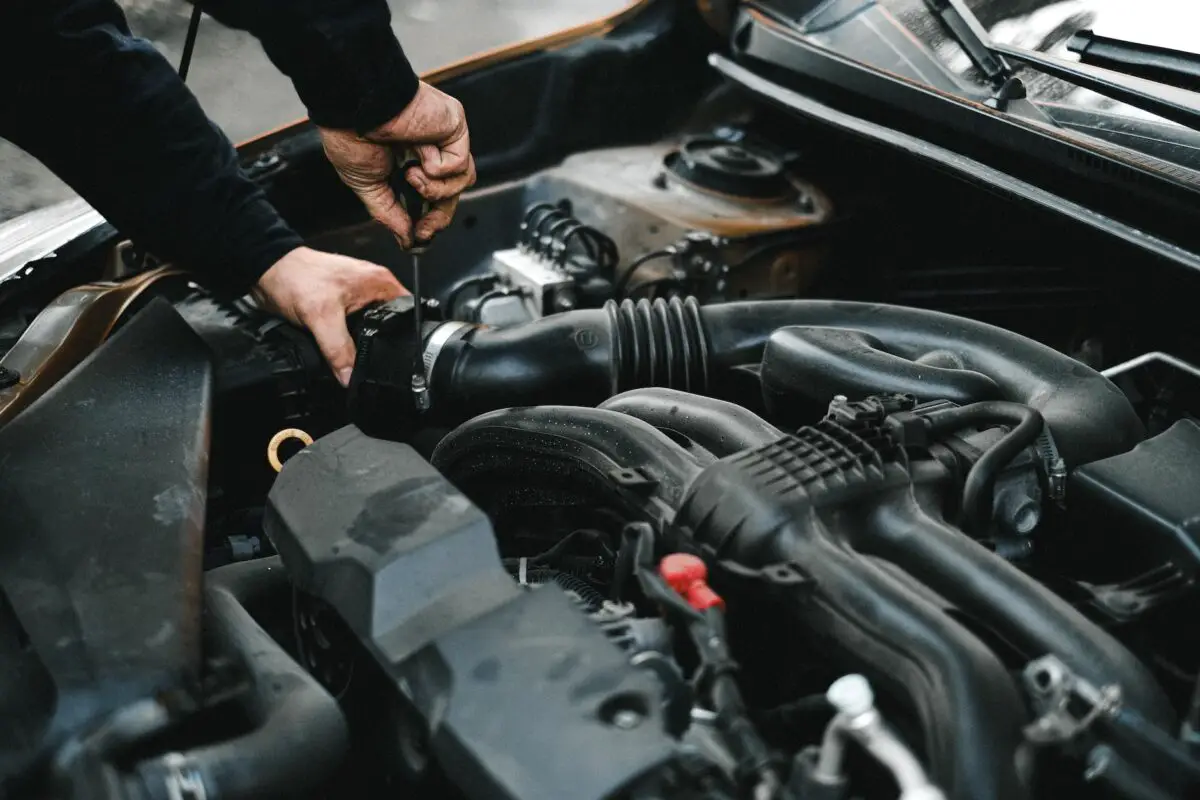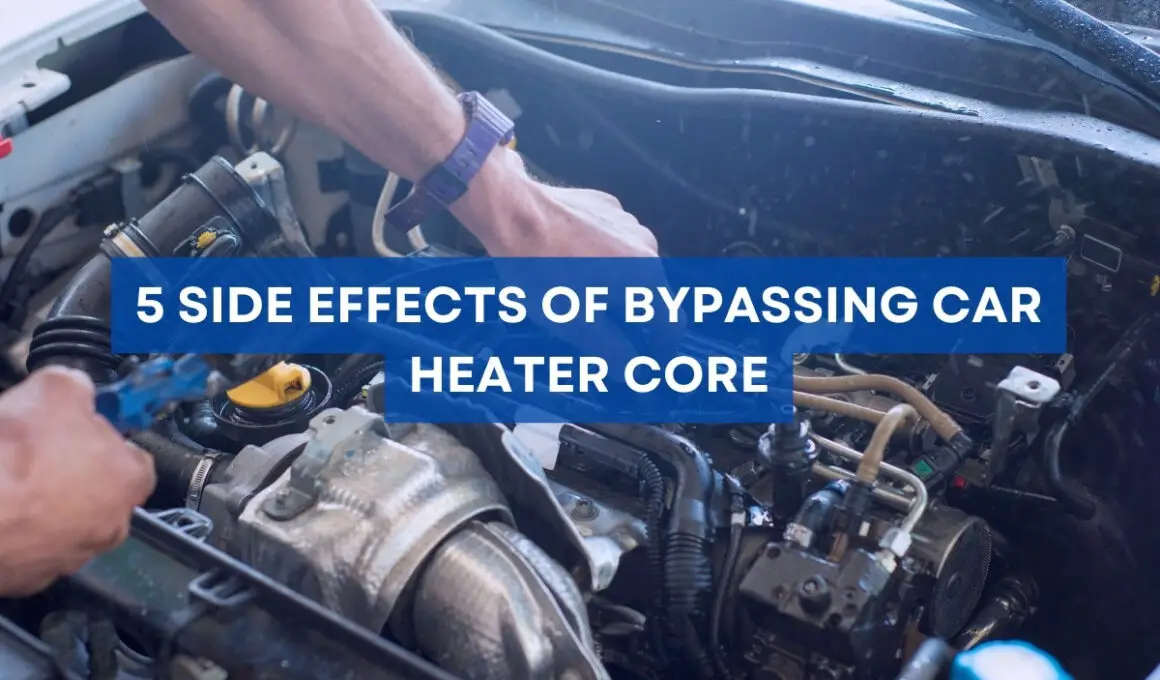In This Article Show
Having spent over a decade wrenching on vehicles of all shapes and sizes, I’ve encountered myriad makeshift solutions that drivers implement to sidestep certain automotive problems.
One such “quick fix” that I’ve seen more than a few times is bypassing the car’s heater core. While I understand the allure of an easy and seemingly cost-effective solution, it’s essential to grasp what you’re potentially signing up for when you bypass this component.
For those less familiar with it, the heater core plays a pivotal role in ensuring you’re not freezing on your winter drives. It acts as a little radiator inside your car’s dashboard, providing warmth when you need it most.
But, like any other part of your vehicle, it can face its fair share of issues. Instead of addressing these issues head-on, some drivers opt for the bypass route.
In this post, I’ll delve deep into the world of heater cores, explaining their significance, and most importantly, discussing the side effects of bypassing them. Let’s dive right in, shall we?
Short answer: Bypassing a car’s heater core might seem like a good approach but it has its downsides. Some side effects are loss in resell value, bad car heater, engine overheating, windshield defrosting issues, and other potential future damages.
What is a Heater Core and How Does It Work?
Alright, let’s break this down in terms we all can understand.
Imagine, for a moment, your car is a giant teapot. It heats up when it’s working hard, just like water in a teapot. The steam from our imaginary teapot? Well, that’s the hot coolant from your engine.
Now, the heater core resembles a tiny, coiled-up metal teacup inside your car, specifically within the dashboard. When you turn on the car’s heater, this “teacup” receives the engine’s hot “steam” or coolant.
The fan situated behind your car’s dashboard then blows air over this hot teacup (heater core). As the air passes over the heated metal, it warms up and is directed into your car’s cabin, giving you that toasty feeling on a chilly morning.
But it doesn’t stop there. After the coolant has done its job of warming your vehicle’s interior, it cycles back to the engine to pick up more heat, ensuring a constant flow and consistent cabin temperature.
In essence, the heater core acts as a bridge, utilizing the engine’s warmth to heat the inside of your car without making direct contact. It’s a nifty piece of engineering that ensures your drives are comfortable regardless of how biting the cold outside may be.
Remember the last time you were driving in winter, and your toes were thanking you for the warmth? Well, you’ve got the heater core to thank for that.
Reasons Some Choose to Bypass the Heater Core
The decision to bypass the heater core isn’t one that car owners take lightly. Generally, some specific reasons or circumstances lead individuals down this route. Let’s take a closer look:

1. Cost Concerns
Repairing or replacing a heater core can sometimes make a sizeable dent in one’s wallet. Depending on the make and model of the vehicle, the replacement parts, and labor costs can be on the higher side. As a result, bypassing becomes an appealing option for those looking to avoid these immediate costs.
2. Temporary Solution to Leakage Problems
A malfunctioning heater core can sometimes leak coolant into the car’s interior. This gives off an unpleasant odor and can lead to foggy windows and potential damage to other components. Bypassing the heater core temporarily prevents these leaks, giving the owner more time to decide on a more permanent solution.
3. Misconceptions about Improved Engine Performance
Some believe that bypassing the heater core might see a slight improvement in engine performance or efficiency. While there’s no substantial evidence to support this, the myth persists in some circles.
4. Ease of Implementation
For those with a bit of car knowledge, bypassing the heater core can seem like a simple and quick fix, especially when compared to the potential downtime and labor involved in a proper repair.
5. Avoiding Further Immediate Damage
Suppose the heater core shows signs of severe damage or corrosion. In that case, some may opt to bypass it as a temporary measure to avoid the risk of further damage or complications while driving, especially if they’re on a trip or away from their regular mechanic.
However, it’s essential to understand that bypassing the heater core is often a short-term solution to a more significant underlying problem. While it may provide a temporary respite, it’s vital to weigh the pros and cons and consider the potential long-term implications of such a decision.
Side Effects of Bypassing the Heater Core
Bypassing the heater core might seem like a simple solution on the surface, but it has its own complications and drawbacks. Let’s delve into these side effects to give you a comprehensive understanding:
1. No In-Car Heating
By bypassing the heater core, you essentially disable the system responsible for channeling warm air into the car’s interior. On cold days, this means no warmth inside the vehicle. This can make winter driving extremely uncomfortable, not to mention the health risks associated with prolonged exposure to cold temperatures, especially on longer drives.
2. Windshield Defrosting Issues
One of the primary functions of your car’s heating system is to defrost the windshield. Without an operational heater core, the ability to defrost the windshield is significantly compromised.
This can lead to reduced visibility during colder months when frost and condensation accumulate on the windshield. Reduced visibility is not just inconvenient; it’s a major safety concern.
3. Engine Temperature Regulation
The heater core assists in dissipating some of the engine’s excess heat by using it to warm the car’s interior. When the heater core is bypassed, this excess heat doesn’t have its usual exit route. Especially in colder climates, this can lead to potential engine overheating or, conversely, the engine not reaching its optimal operating temperature as efficiently.
4. Potential for Future Damage
Coolant that no longer circulates through the heater core might cause certain areas of the system to stagnate. Over time, this can lead to corrosion or the buildup of deposits in parts of the cooling system. Such issues might affect the overall efficiency of the cooling system and even lead to more extensive damage if not addressed.
5. Loss in Resale Value
A bypassed heater core is typically viewed as a temporary fix or a sign of an underlying problem. Potential buyers, especially those knowledgeable about cars, may offer a lower price or be deterred altogether from purchasing a vehicle with a bypassed heater core. They might view it as a potential future expense or a sign that the car hasn’t been optimally maintained.
While bypassing the heater core can offer a quick fix, the side effects and potential future complications make it a choice that should be cautiously approached. It’s always recommended to address the root of the problem rather than opting for temporary solutions that might lead to bigger challenges.
Are There Any Benefits to Bypassing the Heater Core?
While the drawbacks of bypassing the heater core are quite significant, it’s only fair to discuss the reasons why some might view it as beneficial. Here are the potential upsides, albeit most are short-term:
1. Quick Fix
Bypassing the heater core can be faster than scheduling a full repair or replacement. For someone in need of an immediate solution, perhaps due to a pressing journey or lack of immediate funds, bypassing can offer a brief respite from the problem.
2. Prevention of Coolant Leakage Inside the Car
A damaged heater core can leak coolant into the vehicle’s cabin, causing odors, wetness, and even potential damage to the interior. Bypassing the heater core temporarily stops these leaks, keeping the interior dry and free from the distinctive smell of coolant.
3. Potential Cost Savings (Short-Term)
Bypassing the heater core, at least for a while, can save the immediate costs associated with a repair or replacement. This can be beneficial for those on a tight budget, even though it’s merely postponing an inevitable expense.
4. Ease of Reversal
If someone bypasses the heater core temporarily, the process can be reversed relatively easily once they’re ready for a proper repair. This gives vehicle owners flexibility, especially if they’re waiting for a particular part, a specialist mechanic, or an opportune time for repair.
5. Avoiding Prolonged Vehicle Downtime
A full heater core replacement or repair might mean leaving the car at the mechanic’s shop for an extended period. Bypassing can allow the driver to continue using the vehicle without significant downtime.
However, it’s crucial to reiterate that these benefits are mostly short-lived and often serve as temporary patches rather than sustainable solutions. While there might be situations where a temporary bypass is justifiable, it’s vital to understand the broader picture and prioritize long-term vehicle health and safety.
Alternatives to Bypassing the Heater Core
Rather than bypassing the heater core and potentially facing the myriad of issues we’ve discussed, it’s worth considering alternative solutions. These alternatives not only provide a more permanent fix but can also prevent further complications down the road. Let’s explore some of them:
1. Heater Core Repair or Replacement
Depending on the severity of the issue, it might be possible to repair the heater core. If the damage is too extensive, a complete replacement might be necessary. Addresses the root of the problem, restoring the vehicle’s heating and defrosting capabilities, and eliminating any risks associated with a malfunctioning heater core.
2. Preventative Maintenance
Regularly inspecting the heater core and the entire coolant system, flushing the coolant, and ensuring that there are no blockages or signs of wear. By catching potential problems early, you can often avoid more significant, expensive issues. This also helps ensure the longevity and efficiency of the heater core.
3. Using Sealants or Additives
Some products on the market claim to seal small leaks in the heater core. These can offer a temporary solution for minor leaks, delaying the need for immediate repairs. However, be cautious and ensure that the product is compatible with your vehicle and doesn’t lead to further issues.
4. Replacement with OEM or Aftermarket Parts
When considering a heater core replacement, you can opt for Original Equipment Manufacturer (OEM) parts or explore aftermarket alternatives. OEM parts are designed specifically for your vehicle, ensuring a perfect fit and optimal performance. On the other hand, aftermarket options might offer cost savings and, in some cases, enhanced performance or longevity.
5. Consultation with a Specialist
If you’re unsure about the best course of action, consider consulting a mechanic specializing in heating and cooling systems. A specialist can provide expert advice tailored to your vehicle’s specific situation, ensuring you make an informed decision.
In the grand scheme of vehicle maintenance, addressing heater core issues head-on is often the best approach. While the initial costs might seem daunting, the peace of mind, safety, and long-term benefits of a fully functioning heating system cannot be understated.
Pro Tip 👋
Need to talk to a professional with a special discovery on your car issue? Use this link to talk to a professional. This is in partnership with JustAnswer, which has an on-call expert who can help you, especially during an emergency. Talk to a master mechanic now.










